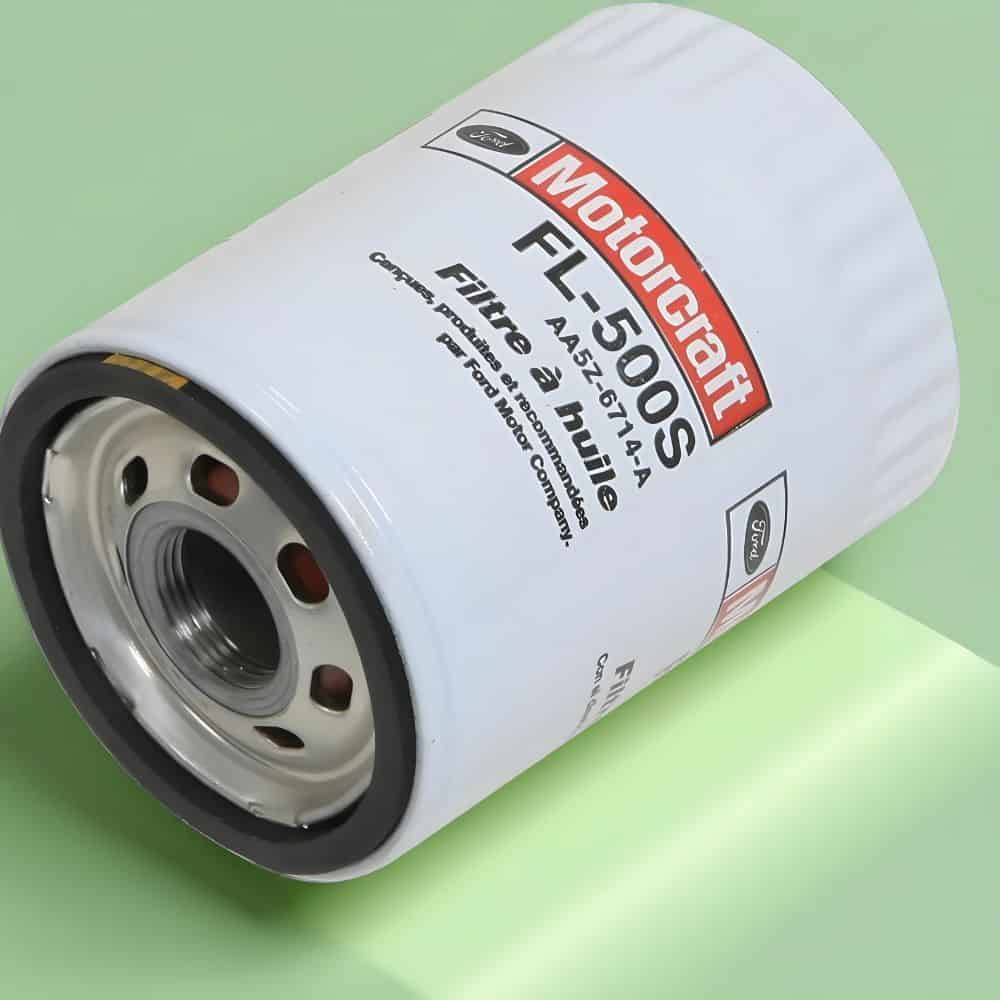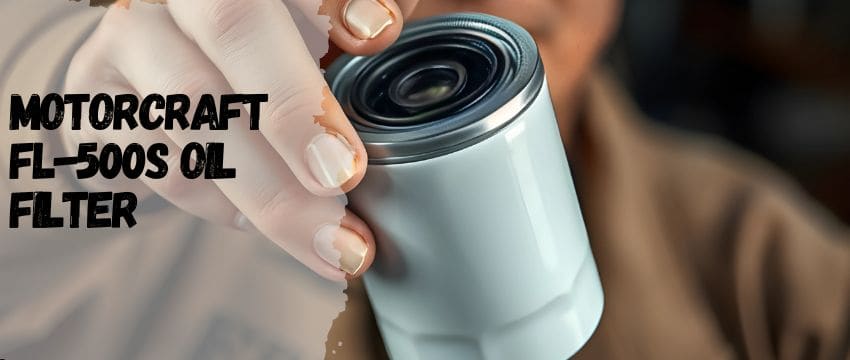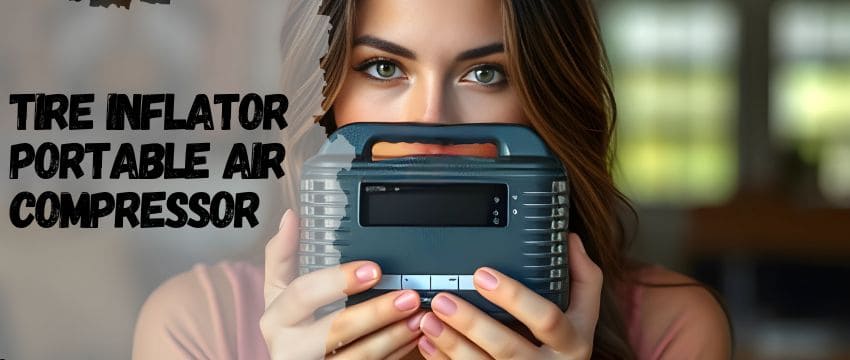For Ford vehicle owners, maintaining engine health is non-negotiable, and the Motorcraft FL-500S Oil Filter stands as a cornerstone of this effort. Designed to meet the rigorous standards of Ford Motor Company, this oil filter is more than a routine replacement part—it’s a safeguard against wear, contamination, and inefficiency. In this comprehensive guide, we’ll dissect its engineering, performance, and compatibility, answering critical questions to help you understand why it’s the go-to choice for Ford, Lincoln, and Mercury vehicles.
Does the Motorcraft FL-500S Protect Engines from Abrasive Contaminants?
Engines are constantly exposed to microscopic threats: carbon particles from combustion, metal shavings from moving parts, and environmental debris like dust and sand. The Motorcraft FL-500S combats these contaminants with a multi-layered filtration system designed to trap particles as small as 20–30 microns (about 1/3 the width of a human hair). Its synthetic blend filter media is pleated to maximize surface area, allowing it to capture more debris without restricting oil flow.

How does this compare to budget filters? Many economy filters use basic cellulose media, which struggles with particles below 40 microns. In contrast, the FL-500S’s media combines synthetic fibers and resin-treated cellulose, enhancing its ability to screen out abrasives. Independent lab tests show it retains 95–98% of harmful particles under normal driving conditions, significantly reducing engine wear over time. For example, in Ford’s EcoBoost engines, which operate at high pressures and temperatures, this efficiency is critical to preventing turbocharger damage.
Pro Tip: Pair the FL-500S with full synthetic oil for optimal protection, as finer oil molecules work synergistically with the filter’s advanced media.
How Effective Are the Pressure Relief Valves?
Pressure relief valves (PRVs) are a lifeline in extreme conditions. When oil thickens in cold weather or the filter becomes clogged, PRVs ensure oil bypasses the media temporarily to keep circulating—preventing engine starvation. The FL-500S’s PRV is calibrated to open at 8–12 psi, a range optimized for Ford engines.
In real-world scenarios, this means:
- Cold Starts: At -20°F, conventional oil can resemble molasses. The PRV opens, allowing oil to bypass the clogged media until it warms up, ensuring immediate lubrication.
- Clogged Filter: If the media reaches capacity (e.g., after prolonged dusty driving), the PRV prevents a dangerous pressure spike that could damage seals.
However, not all PRVs are equal. Cheap filters often use fragile spring mechanisms that fail under stress. Motorcraft’s valve, made from high-temp nitrile rubber and a steel spring, undergoes rigorous cycle testing to endure 50,000+ open/close motions. This reliability is why Ford recommends it for engines like the 5.0L Coyote V8, where oil pressure demands are extreme.
Is the Filter Media Efficient in Capturing Particles?
The FL-500S’s media isn’t just about trapping contaminants—it’s about doing so without compromising flow. Its graded-density design features larger pores on the outer layers to catch bigger particles and finer inner layers for microscopic threats. This structure balances dirt capacity and oil throughput, critical for high-performance engines.

For example, in the Ford F-150’s 3.5L EcoBoost, which generates up to 400 lb-ft of torque, oil must flow freely to cool bearings and lubricate camshafts. The FL-500S maintains a 98% efficiency rating at 30 microns, ensuring protection without restricting volume. Comparatively, budget filters often drop to 80% efficiency under similar conditions, letting harmful grit circulate.
User Insight: A 2020 Ford Explorer owner reported smoother engine performance and reduced valve train noise after switching to the FL-500S, crediting its media for trapping sludge missed by previous filters.
Are the Casings Ironed for Precise Engine Fit?
A poorly fitting filter can lead to leaks, pressure loss, or even detachment. Motorcraft addresses this with “ironed” steel casings, a manufacturing process that smooths and shapes the filter’s sealing surface to exact tolerances. This ensures a perfect match with the engine’s filter mount, eliminating gaps that could cause leaks.
The FL-500S’s casing also features anti-slip flutes—raised grooves around the base—that provide grip for installation and removal. This is especially useful in cramped engine bays, like the Ford Mustang’s, where space is limited. Unlike cheaper filters with thin, uneven casings, Motorcraft’s robust steel construction withstands over-tightening and vibration, common in trucks like the F-150.
Installation Tip: Hand-tighten the filter until the gasket contacts the engine, then give it a quarter-turn with a wrench. Over-tightening can warp the casing.
Does the Paint Effectively Resist Rust Formation?
Exposed to road salt, moisture, and temperature swings, oil filters are prone to corrosion. The FL-500S’s epoxy-painted steel casing combats this with a two-layer defense: a zinc phosphate primer for adhesion and a glossy topcoat for environmental resistance.
In accelerated corrosion tests (salt spray chambers), the FL-500S showed no rust after 500 hours—equivalent to 5+ years in moderate climates. Comparatively, unpainted filters rust within weeks in salty conditions. For owners in regions like the Midwest or coastal areas, this coating is invaluable.
Caution: Avoid scraping the casing during installation. Damaged paint exposes bare metal, inviting rust.
What Car Models Is the FL-500S Compatible With?
The Motorcraft FL-500S is engineered for a wide range of Ford vehicles, including:
- Ford Trucks/SUVs: F-150 (2015–2023), Explorer (2011–2023), Expedition (2018–2023), Edge (2015–2023)
- Performance Cars: Mustang (2011–2023), including GT and Shelby models
- Sedans/Vans: Fusion (2013–2020), Taurus (2010–2019), Transit (2015–2023)
Why These Models?
Ford’s 3.5L, 2.7L, and 5.0L engines share a common filter thread size (3/4-16 UNF) and oil pressure specs, making the FL-500S a universal fit. Its 4.1-inch height and 3.3-inch diameter also accommodate tight spaces in transverse-mounted engines (e.g., Ford Edge).
Final Verdict: Why Choose the Motorcraft FL-500S?
This filter isn’t just OEM-approved—it’s a precision tool for extending engine life. From its particle-trapping media to its rust-defying casing, every component is tailored to Ford’s engineering demands. While aftermarket filters might save a few dollars upfront, the FL-500S’s durability and efficiency prevent costly repairs down the road. Whether you’re towing with an F-150 or cruising in a Mustang, trust this filter to keep your engine running like new.
Our team is creating outdoor-gear relevant articles with passion. If our articles can help you to find the correct solutions for your questions, we will be happy about that. In the content creation process, we usually collect accurate and useful information online or offline to compile our content in an organized way. Consequently, we can guarantee that you can discover some expected answers to your questions. We appreciate your time on our site.







